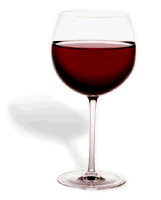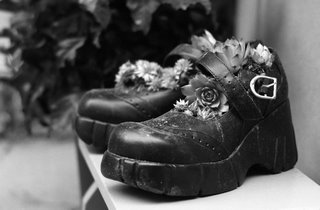
If a camera body is just a box that holds film, then a wine glass should be nothing more than a bowl to slurp wine out of, right? Maybe not. So how do you choose the right wine glass?
Unsuspecting drinkers are likely to be confronted by massive goblets large enough to comfortably house several goldfish. Or cut crystal that looks pretty but merely masks the wine inside. Or thick rims that simply block the wine from your mouth.
Glassware isn’t that hard to figure out. And while I hate to admit it, the proper glass really does make all the difference in enjoying wine — whether it’s $5 table wine or wallet-busting Grand Crus.
The bottom line. Find a set of glasses that fits your budget and your wine-drinking habits. Maximilian Riedel, CEO of Riedel Crystal of America and an 11th generation glassmaker, offers a decent rule of thumb: “What you spend on average for a bottle of wine, you should spend on your glass.”
Totally reasonable, though Riedel stemware — functionally the Rolls-Royce of wine glasses — might not fit everyone’s budget, seeing as it can cost well over $50 per hand-blown stem for the top-end Sommelier line. Still, it’s possible to find good glasses for about $10 apiece.
Good machine-blown glasses from German-made Spiegelau (purchased in September 2004 by Riedel, which is headquarted in Austria) average $10 to 12 per glass, and Riedel’s own entry-level Wine series starts around $10. I’m partial to the Connoisseur line available at Cost Plus stores, which average about $7 per glass.
To be avoided at all costs are those cheap, six-to-a-box travesties, which appeal in an Ikea-impulse-buy sort of way but don’t really warrant use for anything more than apple juice. Their shortcomings are revealed in even the most rudimentary taste tests. (Honest, try it yourself). Assign them to water duty and buy yourself a decent set.
Shape up. No need to go all wine-geek and buy a different glass for every type of wine you drink, but one set each for red and white will make you a happier camper. The aromas and textures of red wines and white wines are different enough to justify separate sets.
Red wines especially require a bowl big enough to provide what Bob Betz, a Master of Wine and owner of Betz Family Winery in Woodinville, Wash., calls “critical mass in the glass”: ample space to properly expose wine to air when it's swirled, and for aromas to be directed into your nose (where most of the “taste” is actually perceived.) A bowl size of 20 to 25 ounces seems about right for red-wine glasses; white wine functions well with bowls around 11 to 13 ounces, though a good glass for white Burgundy might require something closer to 20 ounces
“I was a cynic,” says Betz, “and I was proven wrong time and again.”
Beyond red or white, you’ll want to choose a specific shape. Among Riedel’s 160 shapes, the biggest sellers are Bordeaux-style glasses, meant for cabernet sauvignon and the like, followed by chardonnay glasses.
Pinot noir lovers might prefer a Burgundy-style glass that highlights the grape’s more subtle qualities. And sparkling wine truly benefits from a proper tapered flute — narrow enough to retain the bubbles but wide enough to release the wine's aromas.
These shapes are anything but arbitrary. The Riedel company invites winemakers to collaborate on new designs for specific types of wine, often sending them over 200 shapes to evaluate.
“It’s a Ping-Pong game,” Maximilian Riedel says. “We send them six, they send us back three.”
This back-and-forth can last for months until a final tasting round narrows it down to one perfect shape.
As for stems, sturdier is better — especially if you have clumsy friends. And 29-year-old Riedel also recently introduced his own pet project: His O Series glasses, designed for younger, casual drinkers, use the classic bowl shapes but are stemless.
What to avoid. The most overlooked feature in glassware is the rolled rim, easily detectable by a slightly bulging lip (versus a narrow tapered one). Not only does this block the wine from leaving the glass, it’s a sign of inferior quality. Those six-for-$10 packs almost inevitably have rolled rims.
Skip skinny or shallow glasses with more looks than functionality. Unless you’re drinking riesling, flared bowls or rims are unnecessary. Ditto flourishy stems, or those massive jug-like goblets.
Cut or etched designs may enhance the look of the crystal, but mostly just obscure the wine. Flat-bottomed glasses don’t really let you swirl the wine, which releases its flavor.
Keep it clean. Many wine pros are freaked out about using soap, but the rules aren’t quite so simple. Everyday glasses can survive the dishwasher provided you steer clear of harsh detergents and carefully wipe the glass afterwards. And don’t crowd them in the dishwasher.
More expensive stemware should be hand-washed; dish soap is OK on the outside if you apply it with a finger, but don’t put soap inside the glass. If you aren’t going to wash a glass the same evening you use it, leave some water inside to prevent staining.
Yearning to breathe free. Cabinets impart their own musty, veneered scents to a glass. I battled with a stale scent from my own kitchen cabinets for nearly two years, wiping out and shaking my glasses to clear out the must, before I gave up and moved them to a neutral-smelling closet.
Give the cabinets where you store your glasses a good cleaning, Don’t put glasses immediately into new or newly stained woodwork. Don’t store them upside down (it’ll only trap stale odors) and keep them freshly washed, at least once a month. “They’re not supposed to be dust-catchers,” Riedel says.
Betz endorses a popular technique of seasoning the glass with a bit of wine he’s about to taste: pour a bit in, swirl it around, then dump it out (or into the next person’s glass) before pouring yourself a full serving. The wine rinse helps wash away residue and off scents.




